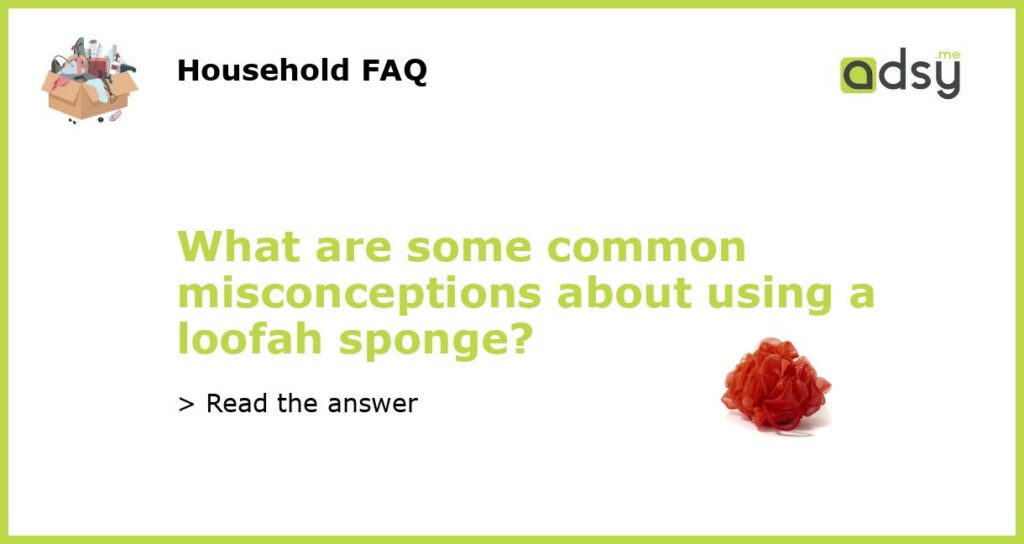Using a Loofah Sponge
A loofah sponge is a common bathroom accessory that many people use to exfoliate their skin and promote a healthy glow. However, there are some misconceptions about using a loofah sponge that may be harmful to your skin. Misinformation can lead to irritation, infection, and damage to your skin. Let’s take a closer look at some of the common misconceptions about using a loofah sponge:
Misconception #1: Loofahs are Self-Cleaning
Many people believe that loofahs are self-cleaning because they are made from natural fibers. However, loofahs can easily collect dead skin cells, bacteria, and fungi. Using a dirty loofah can lead to skin irritation and even infection. It is important to clean and replace your loofah regularly to prevent the buildup of harmful bacteria.
Misconception #2: Loofahs Provide a Deep Cleanse
Using a loofah sponge can give the impression of a deep cleanse due to the exfoliation it provides. However, using a loofah sponge on a daily basis can actually damage your skin. Overexfoliation can strip the skin of its natural oils and contribute to dryness, irritation, and sensitivity.
Misconception #3: Loofahs are Suitable for All Skin Types
While a loofah sponge can be beneficial for some skin types, it may not be suitable for everyone. Individuals with sensitive skin or skin conditions such as eczema and psoriasis may find that using a loofah sponge exacerbates their symptoms. Before incorporating a loofah sponge into your skincare routine, it is important to consider your skin type and potential sensitivities.
Misconception #4: Loofahs Last Forever
Loofahs are not designed to last forever. In fact, they should be replaced every 3-4 weeks to prevent the buildup of bacteria and other harmful organisms. Continued use of an old or damaged loofah can cause skin irritation, infection, and other health issues. It is important to inspect your loofah regularly and replace it when signs of wear and tear appear.






